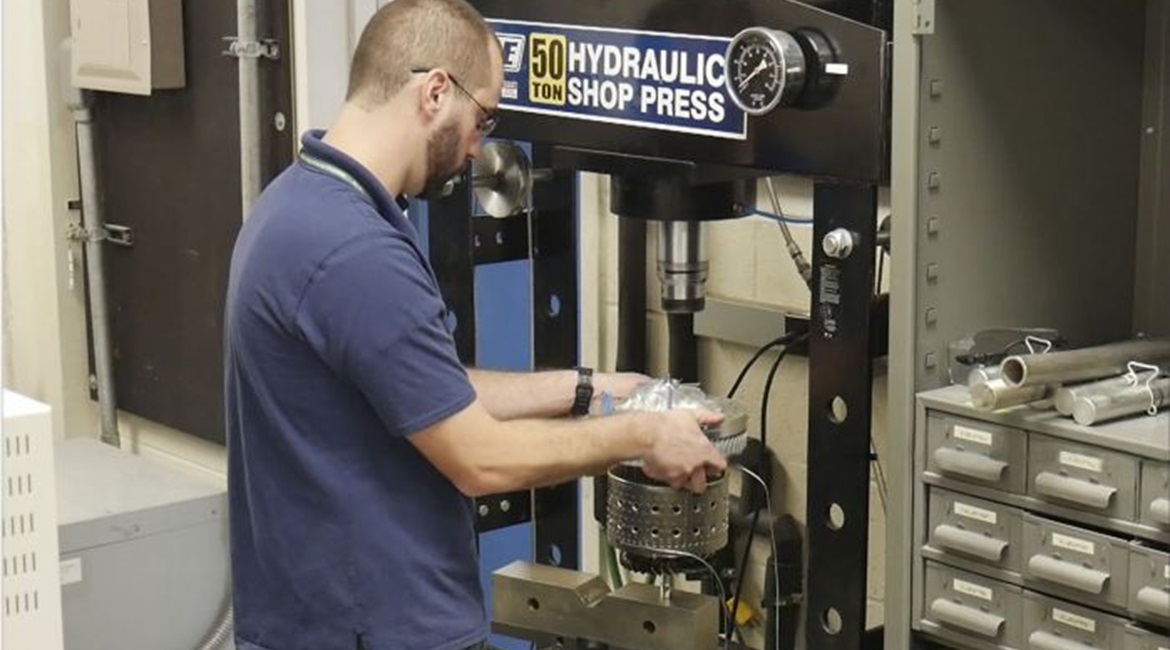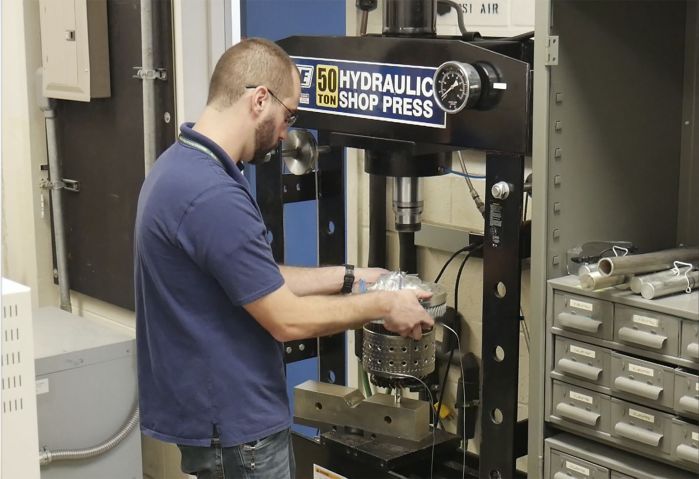
The US Air Force Research Laboratory (AFRL), for the first time, designed, assembled, and tested exclusively in-house a small thrust class size expendable turbine engine.
This propulsion system, the Responsive Open Source Engine (ROSE), responds to the US Air Force’s (USAF’s) desire for rapid demonstration of new technologies and faster, less expensive prototypes, according to a service statement. Greg Bloch, aerospace systems directorate turbine engine division chief engineer, told Jane’s on 19 November that it took six to eight months to develop this engine. An AFRL statement said the entire effort, from concept initiation to testing, happened within 13 months.
AFRL engineer Justin Reinhart makes final adjustments on the Responsive Open Source Engine (ROSE) on the test stand. (Air Force Research Lab)
The AFRL hopes to lower the engine cost to approximately a quarter of the cheapest current alternative. It believes this will enable a new class of air vehicle to capitalise on this less expensive engine.
Frank Lieghley, aerospace systems directorate turbine engine division senior aerospace engineer and product manager, said in an AFRL statement that the laboratory decided the best way to make a low-cost, expendable engine was to separate the development costs from procurement costs. This is because the USAF owns the ROSE’s intellectual property (IP) rights because its design and development were conducted in-house.
Therefore, Lieghley said, once the engine is tested and qualified, the USAF can forego the typical, usually slow, development process. Instead, this enables the air force to offer the production opportunity to lower-cost manufacturers that are better positioned to economically produce the smaller production runs needed for new USAF platforms.
Lieutenant Colonel Ionio Andrus, aerospace systems directorate turbine engine division deputy chief, told Jane’s

Looking to read the full article?
Gain unlimited access to Janes news and more...




